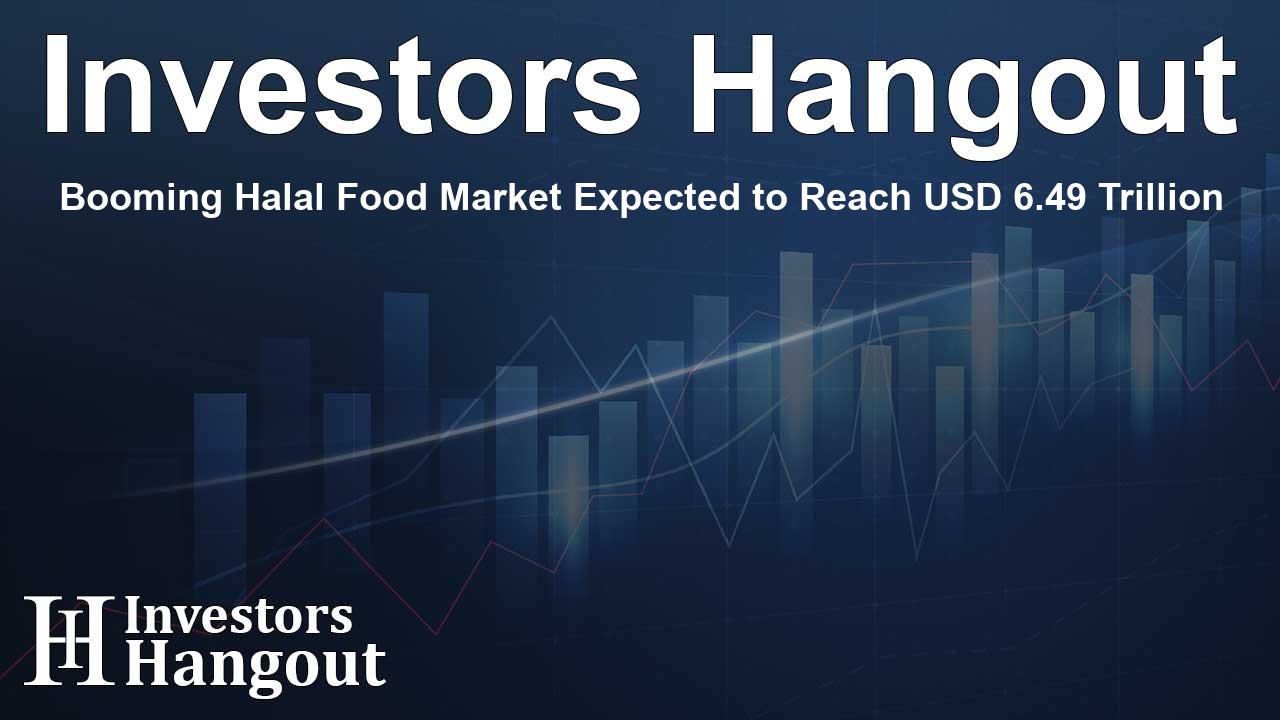Booming Halal Food Market Expected to Reach USD 6.49 Trillion

Global Halal Food Market Growth Prospects
Recent studies indicate that the global halal food market is on the brink of significant expansion. With a market valuation of USD 2.74 trillion in 2024, it is projected to reach an impressive USD 6.49 trillion by 2034, reflecting an annual growth rate (CAGR) of around 9% from 2025 to 2034. This growth is largely influenced by an increasing Muslim demographic eager for halal food options that align with their dietary laws and values.
Drivers Behind the Halal Food Market Growth
The expansion of the halal food market can be attributed to a variety of factors. First and foremost, the rising global Muslim population is a significant contributor to the heightened demand for halal-certified foods. Additionally, the market is benefiting from greater awareness around health and wellness, as consumers are increasingly conscious of the ethical standards governing their food sources. As the halal food segment evolves, it presents ample opportunities for businesses and investors to innovate and meet the rising consumer expectations.
Rising Awareness of Halal Standards
This growth is also attributed to heightened awareness about halal standards among non-Muslim consumers, who view halal food as synonymous with cleanliness, safety, and quality. This perception widens the market’s consumer base and fosters the idea of halal as a lifestyle choice beyond religious obligations. With more people adopting healthy diets, halal food offers options that are not only nutritious but also align with various health-conscious practices.
E-Commerce’s Role in Halal Food Distribution
The advancement of technology, especially through e-commerce, has facilitated enhanced access to halal food products. Many online platforms now provide an extensive range of halal options, making it easier for consumers to purchase these products conveniently from home. Retailers are also increasingly starting to carve out special sections for halal goods, responding to consumer demand and preferences.
Emerging Trends in the Halal Food Sector
To cater to the growing market, businesses are expressly adapting to new trends that emphasize innovation and diversity in the halal food industry. For instance, there is a marked increase in demand for halal certification across food and beverage sectors, ensuring that products not only meet ethical standards but also appeal to health-conscious consumers.
Innovation and Sustainability in Halal Food Production
Innovative practices are also becoming commonplace, with brands exploring plant-based alternatives to meet the needs of vegans and other dietary preferences while maintaining halal standards. Sustainability is another growing consideration, as consumers now expect products to be ethically sourced and produced with minimal environmental impact.
Regional Insights into Halal Food Consumption
Regionally, the Asia Pacific market is leading the pack, driven by a robust Muslim population and a burgeoning middle class. Countries within this region are not only enhancing their local halal production capabilities but are also improving certification processes and logistics to adequately meet rising demands both locally and abroad.
Fastest Growing Markets: Middle East and Africa
The Middle East and Africa are positioned as the fastest-growing areas concerning halal food consumption, spurred by an increasing awareness of halal standards and government initiatives promoting halal certification. Countries like Saudi Arabia and the UAE are witnessing significant investment into strengthening their halal logistics and distribution networks.
Challenges Facing the Halal Food Market
Despite the promising outlook, the halal food market still faces unique challenges. A lack of standardization in halal certification can lead to consumer skepticism, which in turn dampens market confidence. Consumers are increasingly seeking assurance that products are genuinely halal, necessitating transparent and reliable certification systems.
Opportunities for Future Growth
The halal food market is more than just a niche segment; it represents a wide-ranging opportunity for businesses. Brands that cater to both Muslim and non-Muslim consumers can tap into this expanding market. By leveraging the growing interest in healthy food options, companies can diversify their product offerings and increase their market share.
Frequently Asked Questions
1. What is the projected size of the halal food market by 2034?
The halal food market is expected to reach USD 6.49 trillion by 2034.
2. What factors are driving the growth of the halal food market?
The key drivers include a rising Muslim population, increasing health awareness, and enhanced access through e-commerce platforms.
3. Which regions are leading in halal food consumption?
The Asia Pacific region is currently the largest market, followed closely by the Middle East and Africa.
4. How is technology impacting the halal food industry?
Technology, particularly through e-commerce, is making halal food products more accessible to a broader range of consumers.
5. What challenges does the halal food market face?
The halal food market faces challenges related to certification standardization and building consumer trust in halal authenticity.
About The Author
Contact Riley Hayes privately here. Or send an email with ATTN: Riley Hayes as the subject to contact@investorshangout.com.
About Investors Hangout
Investors Hangout is a leading online stock forum for financial discussion and learning, offering a wide range of free tools and resources. It draws in traders of all levels, who exchange market knowledge, investigate trading tactics, and keep an eye on industry developments in real time. Featuring financial articles, stock message boards, quotes, charts, company profiles, and live news updates. Through cooperative learning and a wealth of informational resources, it helps users from novices creating their first portfolios to experts honing their techniques. Join Investors Hangout today: https://investorshangout.com/
The content of this article is based on factual, publicly available information and does not represent legal, financial, or investment advice. Investors Hangout does not offer financial advice, and the author is not a licensed financial advisor. Consult a qualified advisor before making any financial or investment decisions based on this article. This article should not be considered advice to purchase, sell, or hold any securities or other investments. If any of the material provided here is inaccurate, please contact us for corrections.
